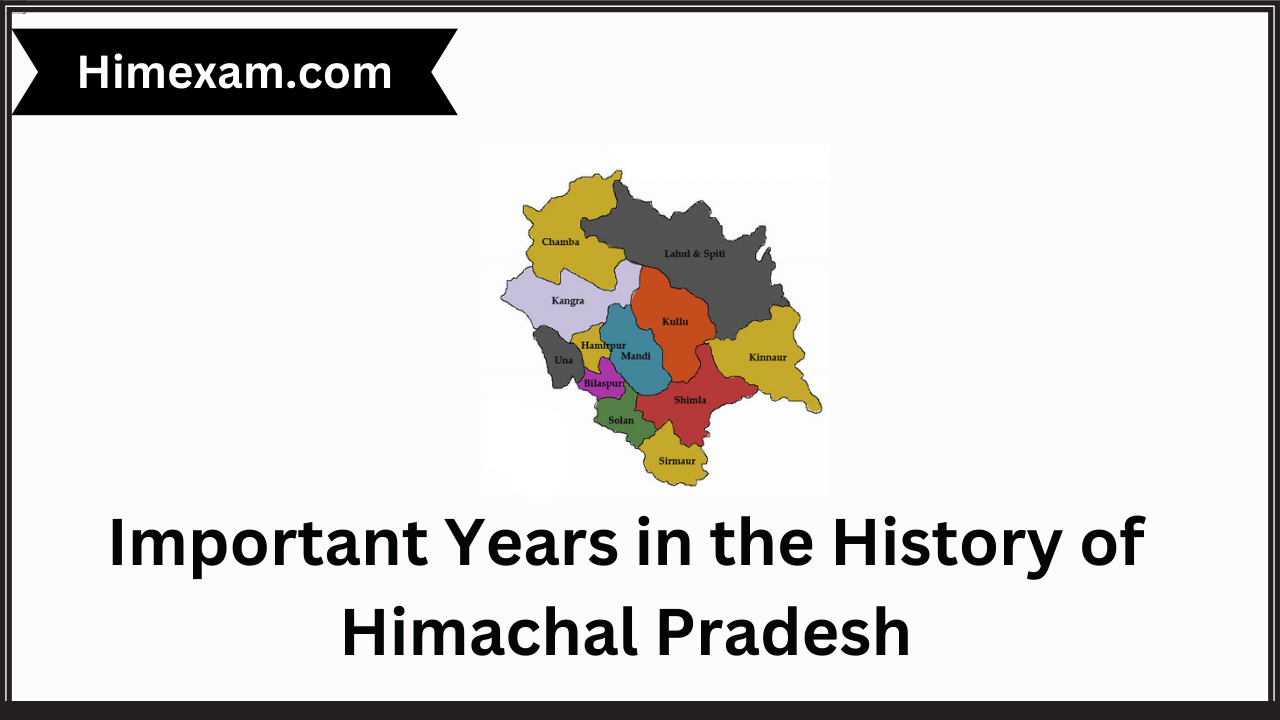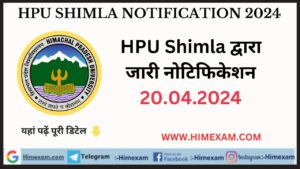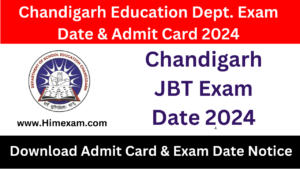Important Years in the History of Himachal Pradesh:-
B.C.
- 40000-4000 Evidence of human civilization were found in various parts of Himachal Pradesh.
- 2000-1000 Formation of small tribal states, which used to be called ‘Janas’ or ‘Janpads’
- 1000 Birth of various small ‘Janpads’ due to the influence of Aryan culture and politics; during this period many warriors and Ganapatis participated on behalf of Kauravas in the Mahabharata war. Prominent among these were Kulinadas, Trigarta, Adumbar and Shatdruj.
- 600 Spread of Buddhism and Jainism in Himachal.
- 500 There is a reference to Trigarta (Kangra) in the writings of Sanskrit writer Panini.
- 345 Chandra Gupt recruited soldiers from the Hill Gana states and with their assistance destroyed the Nand dynasty.
- 100 A coin bearing the inscription with the tribal name mentioned in the Mahabharata is found. The reference to Audumbara or the country of Udumbaras addressed to Kangra.
- Important Years in the History of Himachal Pradesh:-AD
- 500 Sreshta Sen of Kashmir bestowed ‘The land of Trigarta’ upon the Pravarasen (reference is available in Rajatarangini).
- 520 Pravarasen is said to have conquered Trigarta (Kangra).
- 620 This is the approximate date of the foundation of Chamba state. First time the name of one Aaditya Varman appears in the Vanshavali and he is referred to as the great grandfather of Meru Varman.
- 625 Establishment of Katoch dynasty in Kangra.
- 635 The Chinese pilgrim Hiuen Tsang visited Jalandhar. Reference is found of Kangra and Kiu-lu-to (Kullu) in his writings. He describes the kingdom Che-lan-to-lo, that is, Jalandhara. Hiuen Tsang after staying for four months at Jalandhara also visited Kullu.
- 647 Harsha died and his death was followed by the era of trouble and confusion in the history of Himachal until the reign of Yashovarman.
- 894 Kot Kehlur Fort was built.
- 900 Bir Chand of Chandri (Bundelkhand) laid the foundation of Bilaspur state by defeating the Ranas and Thakurs. He established his State across Satluj and named it as Kehloor. Bir Chand is also said to have annexed some portion of Sirmour state during the year.
- 920 Sahil Varman after conquering the lower parts of Chamba shifted his capital from Brahmpur to Chamba.
- 1009 Sultan Mahmud Ghazni attacked Nagarkot, Trigarta (Bhimkot) during his fourth expedition. He defeated a large Hindu army on the banks of Indus River and advanced into the plains, probably following the route along the foothills and suddenly appeared before Nagarkot. Farishta states that the amount looted by Ghazni was 700,000 golden dinars, 700 ‘munds’ of gold and silver plates, 200 ‘munds’ of pure gold in ingots, 2,000 ‘munds’ of silver bullion, 20 ‘munds’ of various jewels including pearls, corals, diamonds and rubies.
- 1043 A garrison of Kangra Fort was lifted. It was during this year that great enthusiasm was aroused among the Hindus by a rumour that the idol had ordered Mahipal (Raja of Delhi) in his dream and announced that he would return from Ghazni to his own temple at Nagarkot.
- 1070 End of Trigrata ruler dominance over Jalandhar region.
- 1139 It was probably during this year that owing to the curse of women, the original capital along with great part of the surrounding tract of Sirmour state was washed away by an unprecedented flood. @himexam.com
- 1170 Jaswan state was founded; it was an offshoot of Kangra. The founder of this state is stated to be one Purab Chand. 1195 Sirmour state was founded by Shubh Bans Prakash.
- 1210 Yuvraj Bir Sen of Bangahal after defeating Thakurs and Ranas laid the foundation of Sen dynasty. Bir Sen’s younger brother established Keonthal state with its capital at Junga; Raja Malhi Prakash of Sirmour established his supremacy in the hill areas. It was to the credit of Raja Malhi Prakash that he succeeded in the formation of strong, prosperous and big state in the areas of Giri, Pabbar, Yamuna and Bhagirathi. Its capital was at Rajban (Sirmouri Tal).
- 1217 Udit Prakash, son of Malhi Prakash shifted his capital from Rajban to Kalsi.
- 1236 Nizam-ul-Mulk-Junedi, the opponent of Sultan Razia Begum took shelter in Sirmour state during the reign of Koul Parkash.
- 1248 Sultan Naseerudin, cousin of Jalaluddin Masud took shelter in Sirmour state during the reign of Raja Suraj Prakash.
- 1300 Banghal state was founded.
- 1337 Kangra Fort was captured by Muhammad Tughlaq.
- 1351 Purab Chand recovered Kangra Fort.
- 1365 Firoz Shah Tughlak invaded Kangra Fort. The siege of the Kangra Fort lasted for six months when Rup Chand (Raja of Kangra) surrendered and coming out of the fort threw himself on the feet of the Sultan. Sultan with great dignity placed his hand on the raja’s back and sent him back to the fort.
- 1379 Firoz Shah Tughlak took over the control of Sirmour state and made it his tributary.
- 1398 Timur era of destruction began with the looting in Sirmour, Nalagarh, Jaswan and Nurpur areas.
- 1405 Guler state was founded by one Hari Chand, the raja of Kangra. In this way it become an offshoot of Kangra.
- 1499 Ajbar Sen’s accession; beginning of modern period of Mandi history; old Mandi capital was abandoned and the site of present capital was acquired.Some historians put the selection of present capital in the year 1527.
- 1500 Evidence is available that Banghal state was founded.
- 1526 The celebration of Shivratri in Mandi is said to have been started in the year 1526 to commemorate the foundation of the present Mandi town. Before this, the capital of Mandi town was at the right bank of the river Beas, which is now known as ‘Purani Mandi’.
- 1540 Sher Shah Suri ordered his able General Khawas Khan to bring Nagarkot and other hill areas under his subjugation. Khawas Khan succeeded in his mission. After sacking the temple at Bhawan, he carried away the idol, alongwith a copper umbrella suspended over it.
- 1538 Raja Dharam Prakash of Sirmour shifted his residence to Kalsi.
- 1550 Siba state was founded. It was an offshoot of Guler state. It was founded by one Sibaran Chand. Later on Datarpur state was also founded by Datar Chand.
- 1556 Bakht Mal, Raja of Nurpur, had allied himself with Sikander Shah and after Maukot surrender, he was taken to Lahore and executed by Bairam Khan.
- 1611 European traveller William Finch made a reference to Kangra in his memoirs without visiting Kangra.
- 1615 Thomas Coryat was perhaps the first European to visit Kangra.
- 1620 Kangra Fort was sieged by Mughal army. The siege lasted for one year, two months and a few days, and the garrison were reduced to such straits for want of food that they stripped the bark from the trees and boiled it for food.
- 1621 The seat of the government of Sirmour was changed from Kalsi to Nahan during the reign of Raja Karam Prakash.
- 1622 Jahangir visited Kangra accompanied by Begum Nur Jahan. It was during this visit that Nur Jahan was fascinated by the beauty of Kangra valley, particularly of Nurpur. Jagat Singh, the ruler of Dhameri changed the name of his state in honour of the visit of Emperor Jahangir and his Begum. He named Dhameri as Nurpur.
- 1623 Raja Janardhan of Chamba was treacherously murdered. After the murder of the raja of Chamba, Jagat Singh of Nurpur ruled it for over 20 years.
- 1627 Shah Jahan defeated Jagat Singh and his son Raj Rup and won Makout, Mau and Taragarh Forts.
- 1634 Nizabat Khan, governor of Kangra also annexed Sirmour state to Mughal empire.
- 1640 Raja Jagat Singh Pathania of Nurpur was appointed the faujdar of Kangra by Shah Jahan.
- 1643 Raja Kalyan Chand of Bilaspur gifted some areas to Guru Hargobind Singh.
- 1648 The idol of Madho Rai, the presiding deity of Mandi and the incarnation of Lord Vishnu is said to be made by goldsmith Bhima.
- 1651 The famous idol of Raghunathji’ was brought from Ayodhya by one Damodar Dass and installed in Kullu by Raja Jagat Singh. It is associated with the celebration of Dussehra.
- 1654 The capital of Bilaspur state was transferred from Kot-Kehlur to Bilaspur.
- 1664 Guru Teg Bahadur started living in Mukhowal after purchasing some land from the raja of Kehlur.
- 1666 Thevnot, a European visited Kangra.
- 1682 Guru Gobind Singh, was residing in Kahlur state. A conflict arose between him and Bhim Chand (Kahlur ruler) in which the latter was defeated.
- 1686 Raja Bhim Chand of Bilaspur leagued with the rulers of Guler, Kangra and other states and again attacked the Sikh Guru Gobind Singh. Battle occurred at Bhagani (a place six miles from Paonta Sahib) but hill chiefs were again defeated. In this battle, the Raja of Hindur Hari Chand was killed by an arrow shot by Guru Gobind Singh.
- 1687 Guru Gobind Singh helped the rulers of hill areas and became instrumental in defeating the Mughals in the Nadaun war.
- 1697 Alam Chand founded Alampur opposite Sujanpur-Tira on the bank of Beas River.
- 1699 Sikh Panth was formed. The army of Guru started looting and plundering Kutlehar and Bilaspur.
- 1700 Raja Bhim Chand and Alam Chand of Kangra jointly attacked the Sikhs but were defeated.
- 1701 Guru Gobind Singh concluded peace treaty with Bhim Chand.
- 1703 Anandpur Sahib was garrisoned by hill chiefs’ soldiers with the help of Mughal army. As a result Guru Gobind Singh was forced to leave Anandpur Sahib in 1704.
- 1745 Adina Beg, Punjab Mughal Governor, targeted hill chiefs. He defeated the rulers of Guler, Jaswan, Maukot, Nurpur, Kutlehr, Bangahal and destroyed Jai-Singhpur and Bilaspur. Raja Shamshar Sen of Mandi accepted the supremacy of Adina Beg without fighting. But Adina Beg could not capture Kangra Fort.
- 1752 With the decline of the Mughal power and transfer of Punjab to Afghans in 1752, the hill states came under the supremacy of Ahmad Shah Durani.
- 1758 Raja Ghamand Chand was appointed governor of Jalandhar Doab under the Afghans. To maintain his power, he raised a force of 4,000 men composed of Rohillas, Afghans and Rajputs. He acquired supremacy over all hill chiefs.
- 1762 Satluj River was blocked in Bhajji state for 42 days by a large landslide and some parts of Bilaspur were flooded.
- 1770 Jassa Singh Ramgarhia made several hill chiefs, including Nurpur, his tributaries.
- 1775 The supremacy of hill chiefs passed over to Jai Singh Kaniheya. He defeated Jassa Singh Ramgarhia and captured the Kangra group of states including Datarpur, Nurpur and Siba.
- 1782 Kangra Fort was besieged by Sikhs under Jai Singh Kaniheya and Sansar Chand of Kangra; but Jai Singh Kaniheya refused to hand over the Kangra Fort to Sansar Chand. Old and sick Mughal governor Nawab Shaif Ali Khan failed in his mission and surrendered Kangra Fort. This was the end of dominance of the Mughals.
- 1783 Foster visited Kangra and passed through Bilaspur state.
- 1786 Jai Singh Kaniheya could not retain Kangra Fort for long due to the defeat of Sikh Misal in Punjab. The Kangra Fort went to its bonafide heir, Raja Sansar Chand after a gap of 166 years. Sansar Chand shifted his capital to Nadaun and started his expansion policy after subjugating Mandi, Suket, Kullu, Bilaspur and Chamba.
- 1796 Sansar Chand invaded Bilaspur state. Bilaspur Rani sought help from Dharam Prakash, Raja of Sirmour. Sirmour army came in response but was defeated along with the Bilaspur army. Dharam Prakash was killed in this war.
- 1803-04 Sansar Chand invaded the plains of Hoshiarpur and Bajwara but he was defeated by Ranjit Singh. 1804 Rulers of Bilaspur, Chamba, Mandi and other small states of Kangra invited the Gurkhas’ chief, Amar Singh Thapa to attack Kangra. On the other hand, Raja Karam Parkash also sought the help from Gurkhas. Amar Singh Thapa despatched 700 men under Bhakti Thapa but he could not face the challenge of opposing forces. Amar Singh Thapa himself succeeded in his mission.
- 1805 Sansar Chand attacked and annexed some territories of Kahlur (Bilaspur). Mahan Chand, Raja of Bilaspur asked Gurkhas for help. The Gurkhas crossed the Satluj along with an army of 40,000 in 1805-1806 and defeated Sansar Chand’s forces at Mehal Mori. Gurkhas laid the siege of the Kangra Fort, which lasted for four years.
- 1809 Maharaja Ranjit Singh came to Jawalamukhi and met Sansar Chand. It was through this meeting that a treaty was drawn up under which Kangra Fort was to be handed over to Ranjit Singh if it is liberated from Gurkhas’ siege. On 24th August, 1809, Ranjit Singh took over possession of Kangra Fort. After this, all the states of Kangra group came under Ranjit Singh’s control. Ranjit Singh compelled Gurkhas to retire across Satluj. Desa Singh Majithia was appointed Nazim of the fort. After the defeat of the Gurkha forces in Kangra, they put pressure on Raja of Sirmour, Karam Prakash and defeated him.
- 1810 Amar Singh Thapa subjugated Nalagarh, Jubbal, Punder and Dhami. 1811 Amar Singh Thapa after defeating Bushahr army took over possession of Theog, Balson, Kotgarh, Jubbal and Rampur.
- 1813 Amar Singh Thapa, Gurkha chief returned to Arki and handed over the https://himexam.com/wp-content/uploads/2021/12/Madhya-Pradesh-MP-PEB-Group-2-Sub-Group-4-Various-Post-Answer-Key-2021.jpgistration of Rampur state to minor Yuvraj, Mohinder Singh with an annual premium of 12,000 rupees.
- 1814 The war for domination was fought in 1814. The British declared war against the Gurkhas on 19th December, 1814 and the British army entered Nahan town.
- 1815 Bhakti Thapa, one of the bravest officers of the Gurkha army died at Malaun Fort. Later on the Gurkhas were defeated by the British forces and were asked to retire. A treaty of peace, which is known as ‘Treaty of Sagauli was signed between the Gurkhas and Britishers. During this war, British forces were supported by almost all the hill chiefs. Sirmour, Bilaspur, Jubbal, Bushahr, Keonthal, Kuthar, Baghal, Nalagarh, Sangri, Kumharsain, Baghat and Balson states became the protectorate of the Britishers. The Thakurais of Dhami, Bhajji, Theog, Tharoch, Mahlog, Beja, Mangal, Kunihar and Darkoti were also taken in possession and their rulers were given sanads as a token of treaty. Now all these princely states were given autonomy in their internal https://himexam.com/wp-content/uploads/2021/12/Madhya-Pradesh-MP-PEB-Group-2-Sub-Group-4-Various-Post-Answer-Key-2021.jpgistration. From this arrangement, Bushahr was left out. The condition imposed upon it was that it will pay annual nazrana of 15,000 rupees. On the conclusion of Gurkha-British war in 1815, all Shimla hill states had come under the British sovereignty.
- 1820 Moorcraft passed through the hills. He also visited Sujanpur-Tira.
- 1823 Sansar Chand, the great ruler of Kangra died.
- 1830 Britishers acquired 13 villages from the Rana of Keonthal and started construction of Shimla town.
- 1835 Vigne, an European traveller visited Kangra.
- 1839 The forces of Maharaja Ranjit Singh occupied Mandi. Death of Maharaja Ranjit Singh. Beginning of disintegration of Sikh power in the hills.
- 1842 Sikh general Zorawar Singh annexed the territories of Lahaul-Spiti to Sikh state.
- 1845 Sikh army crossed Satluj and invaded the British territory. The Britishers defeated Sikhs and captured the Nurpur Fort.
- 1846 The first Sikh-Anglo war, Lahore Treaty was signed between the Britishers and Sikh. The hill states of Kangra regions including Kullu and Lahaul-Spiti came under the control of British government after its victory over the Sikhs. All these areas were grouped together and organized into one district of Kangra with headquarters at Dharamsala. End of Sikh rule in Himachal Pradesh. Beginning of British East India Company rule. The territories of the rulers of Mandi, Suket and Chamba were returned. The states of Kullu, Kangra, Jaswan, Guler, Datarpur, Haripur and Kotala were annexed to British colony. Their rulers were given small jagirs; Sikh forces were defeated by the Britishers in the battle of Saraon.
- 1848 Secret meetings were held in which the deposed rulers of Kangra and adjoining princely states participated. Opposition to British rule came mainly from Ram Singh Pathania (Nurpur), Raja Pramod Chand (Kangra), Raja Ummed Singh (Jaswan), Raj Kumar Jai Singh and Raja Jagat Chand (Datarpur). Britishers deputed a huge army under its Jalandhar Commissioner Henry Lawrance. The British forces cordoned off Shahpur Fort. Second war front opened at Raja Ka Dera.
- 1849 After suppressing revolt in Kangra, the https://himexam.com/wp-content/uploads/2021/12/Madhya-Pradesh-MP-PEB-Group-2-Sub-Group-4-Various-Post-Answer-Key-2021.jpgistration of Kangra, Kullu and LahaulSpiti areas was put under the control of single https://himexam.com/wp-content/uploads/2021/12/Madhya-Pradesh-MP-PEB-Group-2-Sub-Group-4-Various-Post-Answer-Key-2021.jpgistration of deputy commissioner. Mandi, Suket and Chamba princely states were put under the control of superintendent ‘cis-satluj states’, and the Shimla hill states were put under the control of superintendent Shimla hill states.
- 1850 Lord Dalhousie’s ‘Doctrine of Lapse’ was applied for the first time to Baghat state. There was no legitimate heir in this state.
- 1853 British Christian missionaries activities under the guidance of A. D. H. Frankel, were taken up in the tribal areas of Kinnaur and Lahaul-Spiti.
- 1854 Shimla was selected by the Britishers as their summer capital. Tea in Kangra Valley was introduced with the setting up of Holta Tea Estate.
- 1857 Princely state of Bushahr was the sole state, which openly opposed British rule during 1857 mutiny.
- 1859 Dum agitation launched in Bushahr state by the people.
- 1862 In Suket state a mass movement began against corrupt and dishonest Dungal ‘wazir’; Nearly 72 coolies lost their lives while crossing the Rohtang Pass.
- 1870 Sikhs took possession of Lahaul.
- 1876 Viceregal Lodge was ordered to be constructed by Lord Lytton in Shimla.This place ultimately came to be known as the residence-cum-office of the Viceroy of India.
- 1877 During the Viceroyalty of Lord Lytton, Raja of Mandi, Bijai Sen; Raja of Bilaspur, Hira Chand and Raja of Chamba attended the Delhi Durbar.
- 1882 A. O. Hume started living in his residence at Rothney Castle in Shimla.
- 1883 Beginning of unique Jhugga Satyagraha in Bilaspur state.
- 1885 The idea of the Indian National Congress originated at Rothney Castle (Shimla), the residence of A. O. Hume.
- 1888 Viceroy residence was ready; Lord and Lady Dufferin were first to occupy the sprawling and magnificant buildings. Shimla town was electrified for the first time.
- 1896 The first agitation of its kind was started by the people of Bhattiyat Waziri against the unjust revenue and ‘begaar’ system in the state.
- 1903 Shimla was connected with a railway line, when the first toy train started running on 96 kilometre route from Kalka to Shimla.
- 1905 Devastating Kangra earthquake took place on 4th April, at 6 am. This natural calamity claimed 18,314 human lives. Baba Laxman Das of Una joined the national movement.
- 1906 Lala Lajpat Rai visited Mandi to organize the revolutionary activities. A Muslim delegation under the leadership of Agha Khan met the Viceroy at Shimla. On 4th August, Yashwant Singh Parmar was born at village Chanhalag in Sirmour district. The people of Rampur Bushahr started ‘dujam’ a form of non-cooperation movement against their exploitation by state officials.
- 1909 Revolt occured in Mandi state against the repressive, corrupt and arrogant jpgistration of Raja Bhawani Sen and his ‘wazir’ Jiwa Nand Paddha. This revolt was led by Shoba Ram
- 1912 Rani Khairgarhi, widow of Raja Bhawani Sen, joined the freedom movement.
- 1913 A prominent revolutionary of Mandi, Hardev Ram joined a band of patriots. Hardev went to Shanghai, America and Japan, where he met Lala Hardayal and Mathura Singh.
- 1914 Another revolutionary of Mandi, Bhai Hirda Ram started participating in revolutionary activities. He joined Ras Behari Bose, Mathura Singh, Kartar Singh Sarba, Bhai Parma Nand and Pingle.
- 1915 On the request of Sarla Devi, wife of Bhai Hirda Ram (Mandi), the viceroy converted his death sentence into life imprisonment. Nagchala dacoity in Mandi state took place.
- 1916 Lady Annie Besant visited Shimla and propogated Home Rule League movement there.
- 1917 In Mandi conspiracy case, Mandi revolutionary Sidhu Kharara was sentenced for seven years.
- 1918 Yash Pal (Nadaun) joined the band of freedom revolutionaries.
- 1920 Kunihar revolt took place.
- 1921 On 23rd May, Mahatma Gandhi visited Shimla. Other national leaders with him were Maulana Muhammad Ali, Shaukat Ali, Lala Lajpat Rai, Madan Mohan Malviya and Lala Duni Chand Ambalvi. These leaders were welcomed by thousands of people with the chanting of ‘zindabad’, ‘Bharat Mata ki Jai’ and ‘Bande Matram slogans.’A huge rally was addressed by Gandhiji at Idgah (Shimla).
- 1922 Lala Lajpat Rai was shifted from Lahore jail to Dharamsala jail.
- 1924 Revolt in Suket state was started against corrupt, and cruel dictatorship of its ruler. It was led by Rattan Singh, who was later on arrested for his subversive activities.
- 1925 On 21st August Viceroy Lord Reading inaugurated the Central Council Chamber. Vithal Bhai of Swaraj Party was elected as first president, at present this historical building stands converted into Vidhan Sabha Chamber.
- 1927 Lala Lajpat Rai, Mahatma Hans Raj, Madan Mohan Malviya and Duni Chand Ambalvi visited Shimla and addressed a huge gathering at Idgah (Shimla). A political conference was organized at Tal (Sujanpur). This conference was attended by Mela Ram, Kundan Lal, Sarojini Naidu, Sarla Devi and Duni Chand Vakil. Sarojini Naidu conferred the title ‘Bulbul-i-Pahar’ on Baba Kanshi Ram.
- 1931 Mahatma Gandhi again visited Shimla in connection with Gandhi-Irwin agreement. Gandhi was accompanied by Jawahar Lal Nehru, Maulana Abdul Kalam Azad, Khan Abdul Ghaffar Khan, Madan Mohan Malviya, Dr. Ansari and other leaders.
- 1933 Mandi legislative council was constituted. 1936 Chamba Sevak Sangh came into being.
- 1938 Himalaya Riyasti Praja Mandal was organized at Shimla. This paved way for the formation of praja mandals. It organized activities throughout the state.
- 1939 Occurance of Dhami firing at Mandeha village. It resulted in death of two freedom fighters and injuring 80. Under the leadership of Raj Kumari Amrit Kaur, a delegation of freedom fighters like Pt. Sita Ram, Bhag Mal Sauhata and Bhaskara Nand apprised Gandhiji and Nehru of the incidence of Dhami. The rulers of the Shimla hill states on the suggestion of Lord Linlithgow convened a meeting to ensure better cooperation and participation. Sirmour Praja Mandal was set-up in 1939. The known figures of the Sirmour Praja Mandal were Chaudhary Sher Jung, Shiva Nand Ramaul and Nehar Singh.
- 1940 The slogan of “Bhai Do, Na Pai” was raised by the praja mandalists all over the princely hill states.
- 1942 Beginning of Pajhota Kisan Agitation in October one freedom fighter Kamna Ram died during the firing; after trial, nearly 52 freedom fighters were given life imprisonment.
- 1944 ‘Azad Hind Fauj’ patriot of Dharmsala, major Durga Mal was hanged at Red Fort in Delhi.
- 1945 ‘Azad Hind Fauj’ patriot of Dharmsala, Captain Dal Bahadur Thapa was hung at Red Fort. Suket Praja Mandal was organized. Viceroy Lord Wavell called the All Party Conference at Shimla; prominent national leaders, like Mahatma Gandhi, Jawahar Lal Nehru, Rajendra Prasad, Sardar Vallabh Bhai Patel, Maulana Abdul Kalam Azad, C. Raja Gopalachari, Khan Abdul Ghaffar Khan, Acharaya Kriplani, Govind Vallabh Pant, Pattabhi Sitarammaiya, Shankar Rao Dev, Jai Ram Dass, Daulat Ram, Ravi Shankar Shukla, Sucheta Kriplani, Sarojini Naidu, Bhule Bhai Desai, Asaf Ali, Aruna Asaf Ali, Mira Ben and Maniben Patel visited Shimla. Besides, Muslim League leaders Muhammad Ali Jinnah, Liaquat Ali Khan, Shahnawaz Khan and Akali Dal leader Master Tara Singh also visited Shimla.
- 1945 Foundation of ‘Himalayan Hill States Regional Council’ was laid during Jaipur session. Swami Purna Nand of Mandi was elected as president of the council and Padam Dev became its general secretary.
- 1946 A session of ‘Himalayan Hill State Regional Council’ was held at Mandi from 8-10th March. It was also attended by INA activists Dhillon, Sehgal and Shahnawaj. Second conference of the council was held at Nahan. Bilaspur and Balson Praja Mandals were also organized; Gian Chand Tutu was elected president of Kohistan Praja Mandal. On 17th November, Satya Dev Bushari raised the demand for Pahari Prant. The cabinet mission held talks with the representatives of the Congress and Muslim League in India.
- 1947 In March, a meeting of ‘Himalayan Hill States Regional Council’ was held in Shimla. Yashwant Singh Parmar was elected its president and Padam Dev became general secretary. In June, differences cropped up among the members of the council as a result, the formation of ‘Himalayan Hill States Sub-Regional Council’ took place.
- 1948 On 25th January, a resolution was passed at Ganj Bazaar conference held at Shimla. In this conference a proposal for ‘Himalaya Prant’ was adopted. On the other hand, a parallel resolution was passed in support of ‘Pahari Riyasti Sangh’ at Solan under the leadership of Raja Durga Singh. It was in this conference that the name Himachal Pradesh was adopted. Bushahr Satyagraha was launched. Suket state agitation reached its logical conclusion when nearly 10,000 Satyagrahi reached Suket (Sundernagar) in February, and declared their Independence. Declaration on behalf of the central government was made and acceptance of Himachal Pradesh as separate entity took place on 8th March. On 14th March, the rulers of Suket and Mandi signed the document with the central government for merger in Himachal Pradesh. Similarly Maharaja of Sirmour, Rajendra Prakash signed the merger agreement on 23rd March. Emergence of Himachal Pradesh after merging 30 small and big princely states took place on 15th April, in the form of chief commissioner’s province. It was then divided into four districts, namely Sirmour, Mandi, Mahasu and Chamba. N.C. Mehta was appointed as the first chief commissioner and Penderel Moon became his deputy. An Advisory council consisting of three erstwhile rulers and six representatives of the people was constituted. At this stage Himachal Pradesh’s, area was measured 27,018 square kilometres and the population was 9,35,000.
- 1951 Himachal Pradesh was made a Part ‘C’ state.
- 1952 Elections were held for four Lok Sabha seats and 36 Assembly seats. In these elections, Congress bagged the four seats and 28 Assembly seats; Yashwant Singh Parmar was sworn in as the first chief minister of Himachal Pradesh on 24th March, and the first popular government was instated in the state. A budget of 5.27 crore rupees was allocated for the state. Himachal Pradesh Tenancy Act was introduced.
- 1954 Merger of Bilaspur in Himachal Pradesh as the fifth district of the Pradesh. The State Reorganization Commission presented its report and recommended Himachal’s integration with Punjab, though the chairman of the commission favoured continuance of Himachal Pradesh as a separate entitiy. It was with great difficulty that Himachal could retain its existence at a very high cost.
- 1956 The union government decided to retain Himachal Pradesh as a separate entity. Himachal became a union territory on 1st November. Territorial council was created in Himachal Pradesh. Lt. Governor was appointed for the Pradesh.
- 1959 Construction of Kandrour bridge, the highest in Asia, was taken up across Satluj River. It was completed in 1964.
- 1960 Kinnaur district was carved out as the sixth district by including ‘Chini tehsil’ and 14 villages of Rampur tehsil.
- 1962 Ashok Sen committee in its report recommended transfer of more subjects to the territorial council to enhance its power.
- 1963 Territorial council was converted into Vidhan Sabha on 1st July. This could be possible after a long and peaceful campaign of the leaders and the people.
- 1965 Separate civil and police cadres for union territories were created on 1st December. It was addressed as ‘DHAN’, the cadres of Delhi, Himachal Pradesh and AndamanNicobar. A parliamentary committee headed by speaker Hukam Singh was set-up to study and recommend the solutions to the problem of Punjabi Suba demand and the committee favoured the demand.
- 1966 On the recommendation of Punjab Boundary Commission, the government of India, while reorganizing two separate states of Haryana and Punjab, also decided to merge the hill areas of Punjab into Himachal Pradesh. Areas merged into Himachal were Kangra, Kullu, Lahaul-Spiti, Shimla, Una, Nalagarh, Dalhousie and Bakloh. Total area of Himachal was increased to 55,673 square kilometre.
- 1967 In Himachal, the judicial commissioner court was replaced by the Himachal Pradesh Bench of Delhi High Court at Shimla. However, the state got its separate high court after achieving statehood on 25th January, 1971.
- 1970 On 31st July, the then prime minister, Indira Gandhi declared full statehood to Himachal Pradesh. In December, the parliament passed the State of Himachal Pradesh Act, 1970. On 1st July, Himachal Pradesh University, Summer Hill, Shimla came into being.
- 1971 25th January, Himachal Pradesh became the 18th state of India. Himachal Pradesh Public Service Commission was established.
- 1972 The historical Shimla agreement was signed by Indira Gandhi and Zulfikar Ali Bhutto on behalf of India and Pakistan respectively. On 1st September, two more districts, namely, Hamirpur and Una were created by trifurcation of Kangra district. Mahasu district was reorganized into Shimla and Solan districts. Himachal Pradesh Land Tenancy Act was passed. By the passage of this Act, nearly 87,000 tenants became owners of land.
Important Pages:-
| Himachal Pradesh General Knowledge | Click Here |
| HP Exam Previous Papers | Click Here |
| HP Govt jobs | Click Here |
| HP Current Affairs | Click here |
| Telegram Group | Click Here |
Important Years in the History of Himachal Pradesh




